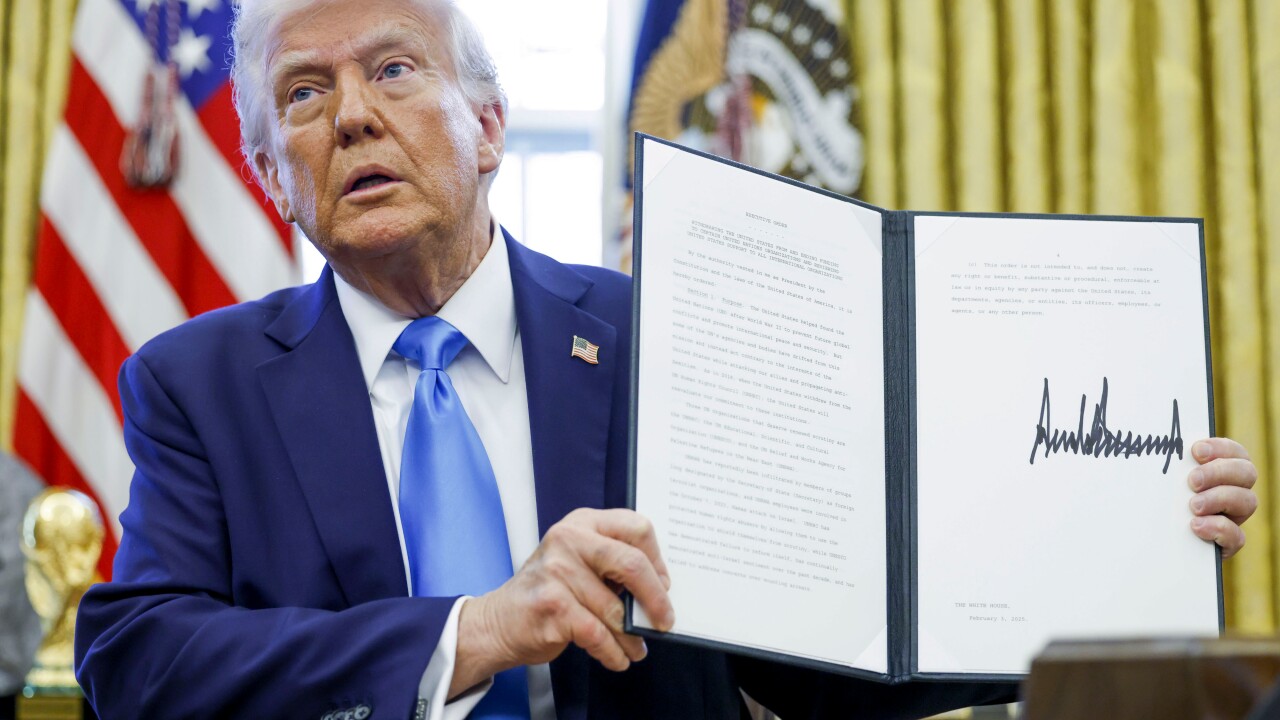Diebold’s
A post-merger focus for the combined company, called Diebold Nixdorf, is the growth path for Wincor's $1 billion European retail payments operation.
In North America, the payment terminal business is both mature and competitive, with entrenched players like NCR butting heads with relative newcomers like Square. To disrupt this market, Diebold must expand it.
“With banks pushing to digitize branch channels, and retailers shifting more sales online, our Diebold Nixdorf is perfectly suited to play a role helping both sides achieve an omnichannel experience by bringing ATM and retail payment hardware and software together,” said Devon Watson, vice president of software research and strategy for Diebold Nixdorf.

The company is further along with the concept than many may realize. While Amazon grabbed headlines last spring with news of its prototype
“We were already running demonstrations to the retail trade of the future of self-checkout ahead of Amazon Go, using our ATMs for the actual checkout, with a combination of Bluetooth beacons and self-scanning apps to ring up purchases,” he said.
Diebold Nixdorf is bringing these ideas directly to merchants—along with banks—via its first-ever mobile marketing effort, the
Analysts say Diebold Nixdorf has solid prospects for developing new checkout products and services for retailers.
“Diebold has a significant opportunity to grow in the U.S. retail self-service market,” said Gil Luria, director of research at D.A. Davidson & Co., a Lake Oswego, Ore.-based analyst firm.
In the past, Wincor had been limited by its inability to deliver installation and maintenance services in the U.S., ceding the entire market to NCR’s self-service solutions, according to Luria.
“With Diebold’s deep and broad service coverage of the U.S., the combined company has a unique opportunity to grow within the U.S. self-service market, which is still in its early stages of development,” Luria said.
Diebold Nixdorf’s omnichannel aspirations don't abandon the company's roots in dispensing cash.
Watson points out that cash’s role in commerce is more vital than ever, so much so that emerging digital payment providers now realize they need traditional cash-based operations to round out their services.
Prime examples are Chinese online giant
“Ant Financial and PayPal are online brands that see the necessity of being attached to a huge cash distribution networks on the ground, suggesting that the pure-play digital approach isn’t going to work for a lot of companies. We’re already situated in the middle where everyone wants to be, with both physical and online capabilities through our hardware, software and global reach,” Watson said.
Similarly, the launch of the
It will take some time for Diebold Nixdorf to realize its vision, Watson acknowledged.
Diebold Nixdorf hasn’t launched a full self-checkout system yet for retailers, and the company is only in talks now with retailers about devising custom approaches for self-checkout using its ATM hardware, retail software and other proprietary technology.
“You don’t build a turnkey self-checkout system overnight, and merchants move carefully, but we’re having conversations with retailers about how our technology can serve their needs as online sales move into stores,” he said.
Banks also are moving slowly but steadily in transforming branches from more narrowly defined operations to delivering a broader range of services in an omnichannel approach, according to Watson.
“We have the hardware and software tools to help banks reformat branches—plus equipment and services—to suit changing demographics and consumer habits,” he said.
Delivering cash to millennials where and when they need it will be a key strategy for banks to win and keep their loyalty, Watson said.
“Our research shows that while older consumers are visiting ATMs less often, millennials hit the ATM one or two times a month, and that’s where our equipment can be used to add more intelligence and leverage more data to expand connections with consumers, keeping the bank relevant,” he said.
On its mobile tour Diebold is demonstrating its new Extreme ATM, a small-footprint machine less than 10 inches wide with Near Field Communication and Bluetooth technology enabling contactless transactions and payments via QR codes. Users may authenticate themselves with a fingerprint to conduct financial activities with no card.
Another new ATM, the Essence, fits nearly flush against the wall and looks like a smartphone or tablet, with similar interactive functions for scrolling, swiping and zooming to conduct bank business. The NFC-enabled Essence accepts EMV cards but has no magstripe reader.
“With our newest machines, we’re working on innovations to solve for the millennial use case, factoring in the knowledge that while they’re using Venmo for P-to-P, they’re also using a lot of routine bank services too,” Watson said. “The key to our future now is that we’ll use our technology and resources to collaborate with banks and merchants on omnichannel solutions.”





